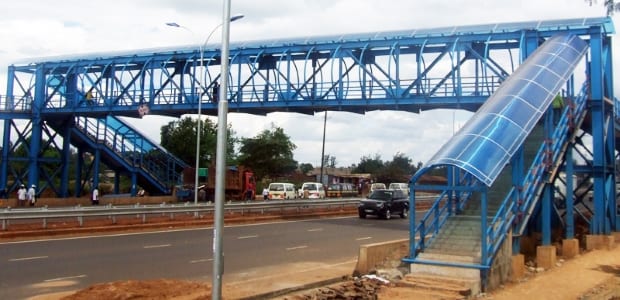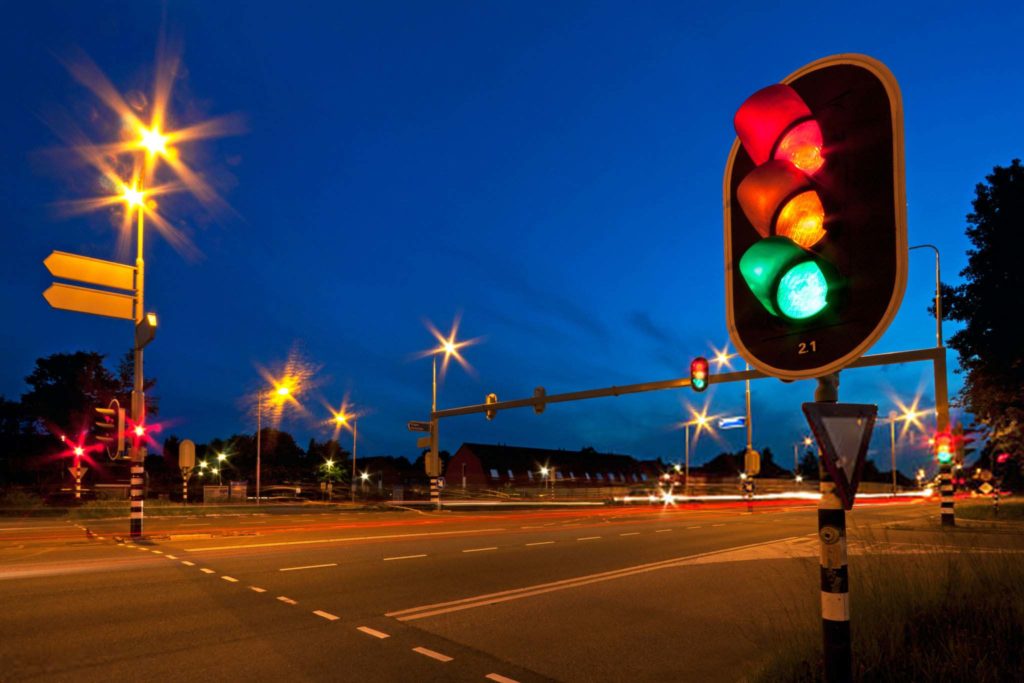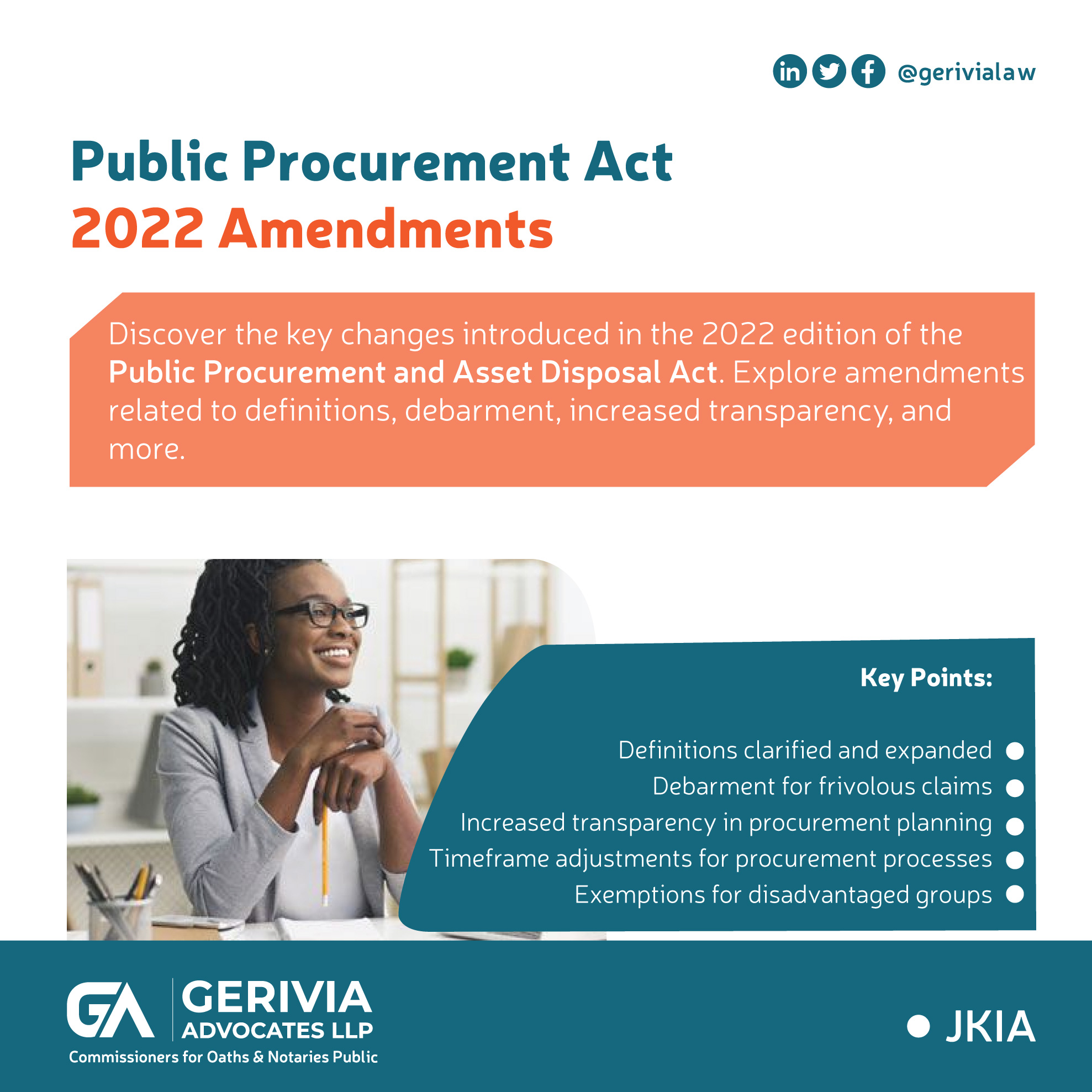Road transport safety is significantly less developed than that of rail, water and air. The average individual risk of fatality in relation to the distance covered is thirty times higher in road transport that in the other modes. This is according to an article “Tools for Road Infrastructure Safety Management- the Polish Experience” (2014- available at sciencedirect.com)
Road accidents remain a leading killer of our people for decades, with deaths from road accident-related injuries affecting about 1.5% of Kenyans each year. Only diseases (diarrhea, HIV/AIDs, lower respiratory tract illnesses among others) rank higher than road accidents in terms of fatalities.
The most disconcerting thing about road traffic accidents is that they are easily avoidable. We just need to put the appropriate measures in place to mitigate occurrences.
‘Big Man’ and High Numbers Impact on Road Accidents
Normally, we tend to talk about the safety of our people on the road at national debate level only in two main instances:
- first, when a prominent personality dies in a road accident; or
- second, when a high-capacity vehicle (mainly buses) gets involved in an accident leading to high numbers of fatalities.
In my view, there is a sharp decline in these road safety debates for the following reasons:
- The newsworthy persons (politicians, celebrities etc.) now prefer to fly to their destinations. This is due to enhanced and expanded aviation facilities, budget airlines and affordability of cheaper helicopter services. Air travel is currently the safest means of travel in Kenya.
- With technology, the high-end motor vehicles used by the same people tend to come with enhanced safety features including airbags, antiroll bars, improved suspension and automated safety features such as lane departure warnings and effective emergency breaking systems.
- With regard to high volume vehicles, there is a sharp reduction due to preference for less cumbersome and faster omnibuses as opposed to the traditional high-capacity buses. These omnibuses, mainly known as ‘shuttles’, carry a maximum of 16 passengers while a bus will carry a minimum of 40 passengers.
This leaves the roads to these shuttles, commercial non-passenger vehicles, matatus, small private passenger vehicles, motor bicycles, bicycle and pedestrians.
As a result, the media coverage of major accidents has remained low-key making the general populace feel less urgent need for a push to curb the situation.
Motor Cycles aka Boda-Boda Effect
In 2008, the then Finance Minister and present National Assembly Majority Leader Hon. Amos Kimunya changed the face of road traffic in Kenya, in a big way.
In his budget statement, he zero rated duties on the motorcycle importation leading to the unprecedented growth of the Boda-boda industry in the country.
The government has indicated that the sector records almost Kshs. 1 billion every day and supports employment of over 5.2 million people directly and indirectly. Today, the number of boda-bodas stands at over 700 thousand machines.
These bikes have contributed annually, on average, to 600 deaths and between 3,000 and 13,000 disabilities. The country loses billions of Shillings in addressing injuries, trauma, burials, and repairs due to these accidents.
Having laid that background, is it the law or the population to blame for the poor road safety record? Or is it both?
The Law and Impact on Road Accidents
The Constitution literally touches on all areas of our lives as Kenyans. How does the Constitution affect road usage and accidents?
If you take one example, Article 227 (1) of the Constitution stipulates that public procurement should be undertaken in a competitive, transparent, cost effective, equitable and fair manner.
If you omit any of these in infrastructure development, you end up with substandard facilities. Lack of transparency and competition could lead to poor quality roads thereby enhancing occurrence of accidents on a certain road.
Procurement processes which are not competitive lead to expensive roads meaning that we end up with less safe roads.
Understanding Laws Applicable to your Driving
The Traffic Act governs usage of roads in Kenya. It mainly handles the following issues:
- Licensing of vehicles of certain categories including inspection of such vehicles;
- Motor vehicle registration including issues like change of ownership;
- Driving licences
- Offences on the roads
- Regulation of traffic including enforcement of highway code, road closures among others
- Regulation of public service vehicles including boda-bodas
The other important law is the National Transport Safety Authority Act. This is the Act that sets up the National Transport Safety Authority (NTSA) whose role is to ensure safe usage of our roads.
This is intended to be achieved through implementation of the Traffic Act and development of laws, regulations and policies to ensure safety on our roads.
Sadly, the NTSA seems to have lost the public confidence fight when it was solely associated with ambush and arrest of drunk drivers and chasing down of over speeding vehicles, at the expense of its other mandates.
This led to somewhat abrupt withdrawal of some of the major mandates of the NTSA on 9th January 2018. With new leadership however, there is hope that NTSA will be allowed to implement its mandate unhindered.
Transport Licensing Act
This Act sets up the Transport Licensing Board. It mainly governs vehicles (and ships) used within the country to carry passengers or goods at a commercial level. This Act sets up various categories of licences and creates the terms and conditions upon which the licences are issued.
For instance, Section 4 (7) gives the Minister for Transport power to exempt certain persons or class of vehicles from the provisions of the Act.
Going through the above laws, one thing that strikes a person is the sheer depth of our legislation regarding the law on road usage and safety thereof. Our comprehensive traffic and transport safety laws tend to cover adequately the diverse issues that arise on a daily basis with regard to road usage. In a nutshell, it is a fact that we do not make use of all of them.
Yet…Critical Legal Provisions Remain Unused
I will give one critical example of unimplemented laws. This is with regard to visibility of trucks while on the road. In a write up by lawyer Francis Kabuchu of Gerivia Advocates LLP on a paper on road traffic accidents in Kenya, he states:
“Research in Germany however has shown that nearly 5% of fatal truck crashes are attributable to poor visibility of the truck or its trailer at night. This research is in agreement with the recent trend of severe car-truck accidents which has formed the motivation for this research.”
He goes on to state:
“Rule 25 of our Traffic Rules provides that a heavy vehicle shall have a white reflective sheet fitted at the rear and the front of the vehicle with dimensions as specified therein and in Schedule 10. The NTSA (Operation of Commercial Vehicles), 2018 Regulations too at Regulation 9 states that all commercial vehicles shall have retro-reflective contour markings that conform to the standard KS 1820: 2005, that identify as close as possible the entire length and width of vehicles and the motor vehicle when viewed from the front, side or rear and the drawings for the same are illustrated in the Third Schedule of the same.”
This is a clear example of provisions of the law which are unutilized, and without adequate explanations. The failure to implement these provisions has had and continues to have dire consequences.
Consequences of Unapplied Legal Provisions
On Friday 22nd May, 2020, Allan Makaka, a Former Kenya Rugby 7s player and employee at Royal Media’s Hot 96 FM was driving home at night in his Mercedes ML (an SUV) along Mombasa Road. At a spot near Standard Group Offices, he rammed into a stationary truck and died on the spot. His body was to be found later with the seat belt still on.
In another harrowing accident, two people died on 8th February, 2021 when their small car rear ended a stalled tractor which was carrying electricity poles. The dawn accident occurred along Webuye-Eldoret Road where the two front seat passengers died on the spot while the rear seat passenger sustained serious injuries.
Without a doubt, the above examples point to avoidable accidents which led to demise of three working Kenyans and probably disability of a fourth one.
The examples of fatal road accidents that occur under similar circumstances, due to lack of visibility, as those above, are numerous. If the trucks were visible, the chances of the said accidents happening would have been reduced significantly.
Negative Attitude Effects
In this category, I will pick an example you have all experienced on the road. You are driving on the highway say towards Nakuru (A104). At the straight stretch after Toll towards Gilgil, traffic tends to accumulate due to slow moving trucks.
As a result, there is erratic overtaking by small cars. Suddenly you will spot a driver with a poorly timed overtaking heading towards you on the wrong direction- in fact you could be this driver. I am not sure what your reaction would be.
From my observation however, the driver on the right (meaning the one not overtaking) will normally continue driving towards the driver on the wrong (the one overtaking) at full speed while flashing the lights.
At this point a few things can happen, the driver on the wrong can squeeze himself in between the vehicles he is overtaking. Option two involves swerving off the road to avoid being hit by the driver on the right. Finally, and more tragically, the driver on the wrong will get stranded and collide head on with the driver on the right.
While careless overtaking should not be entertained, indulging the driver on the wrong can save lives of many innocent people, including your own. Road fatalities and injuries do not only affect reckless road users who in breach of traffic laws, but even to innocent road users complying with traffic rules. Take the option of saving lives, do not allow injuries or fatalities to occur due to a self-righteous attitude.
To understand this better watch https://www.youtube.com/watch?v=d0a2tkqoXtc an accident on our roads which resulted in two deaths.
Stressed Society, Arrogance, and Carefree Attitude of Road Users
I am of the view that we are a stressed-up society and this tends to show in our driving. The incidences of road rage, un-invited duels, finger flashing among others are now all too common. You could be driving along Thika Road at 140km/h (on your own emergency and yes – it is illegal) but soon you will find two cars racing you just because you overtook them.
If you accidentally stray off your lane thereby almost hitting the cars on the next lane, irritable hooting, finger flashing and insults will be thrown your way instantly despite any apologies offered.
There is the recent case of a driver who broke another motorist’s windscreen (https://nairobinews.nation.co.ke/editors-picks/rogue-matatu-driver-who-smashed-motorists-windscreen-charged) and another involving two Subaru and Toyota Probox drivers racing, where one ended up in an accident (https://www.kenyans.co.ke/news/62393-uproar-after-subaru-driver-hits-180kmh-thika-highway-video) .
These incidences have nothing to do with legal inadequacies, they just mirror a society grappling with a wide range of issues- from effects of Covid 19, to high cost of living, family feuds, mental health issues among other economic and social deficiencies.
Inadequate Government Investments
There is generally laxity in investment on safety related infrastructure by the Government. The concentration on quantitative infrastructure with less focus on qualitative elements of road safety continues to be a downside with regard to road safety.
The Government is quick to point out that we have added so many kilometers of bitumen roads- which is laudable. On the other side however, the investment in safety on these roads remains questionable even to a layman.
Most of our roads remain unmarked, without necessary road furniture and other essential elements like functional drainage. It is sad that in Kenya, we mostly drive with reliance on our previous experiences of driving on certain roads. If you happen to use a road for the first time, you are likely to encounter an unmarked bump, an unusually sharp corner, livestock, crosswinds or flash floods among others.
It would however save lives if the Government made serious and intentional efforts to put in place measures that would mitigate occurrences of road accidents in bid to preserve lives.
A few examples of such measures would include:
- Wider roads – wider roads have been proven through scientific research to have lower number of crashes.
- Road shoulders – Road shoulders operate to accommodate stopped/stalled vehicles; emergency stops among others. Again, studies have shown that roads with wider shoulders have less crashes than those with narrow shoulders. At the same time, roads with narrow shoulders are better than roads with no shoulders at all.
- Road furniture/Signage – Road markings in Kenya are few and far between. There is a combination of factors to this – from lack of investments by Government, to collusion between contractors and Government officials and vandalism by members of the public. Appreciation of these factors requires that there be deliberate efforts towards achieving wholesome road signage and other similar infrastructure. Such efforts would include delinking signage from construction works, transferring signage works to NTSA, using creativity in putting up signage by abandoning steel for concrete, recycled plastics and fibre and using solar power to light up signage.
- Bumps and rumble strips – According to the Oxford Dictionary rumble strips are, “a series of raised strips across a road or along its edge, changing the noise a vehicle’s tires make on the surface and so warning drivers of speed restrictions or of the edge of the road”.
They are a road safety feature to alert inattentive drivers of potential danger by causing a tactile vibration and audible rumbling transmitted through the wheels into the vehicle interior.
In our country, we have transformed rumble strips into a series of small speed bumps in the sense that a vehicle does not merely rumble but its motion trajectory is altered upon contact with the strips at a high speed.
This is the same case with bumps whereby we do not have standardized bumps. In both cases, the chances of a crash and fatality remain high where bumps or rumble strips are not marked- in this country, those instances are numerous. - Lack of Pedestrian Foot Bridges – it is a common occurrence in Kenya that our multi-billion road infrastructure projects are not usually accompanied by pedestrian foot bridges.
This is the case even for highways which occasion severe disruption and difficulties to pedestrians since common crossings are blocked without providing alternative safe crossing.
It took over a decade for pedestrian crossings to be installed on major foot crossings on Mombasa Road and on Thika Road. While Outering Road has a few foot bridges, they are barely enough, are not located in the right location and there is no enforcement or incentive to ensure pedestrians use them. - Use of reflectors: The use of reflectors by motor cycle users as well as pillion riders could be improved with especially the latter road users not being offered the same. The enforcement of the requirement of use of reflectors could help to boost the visibility and probably save a life or two.

Concept of Forgiving Road Design
In most of our media reports, driver error is mainly blamed for most accidents. The term “driver error” is normally used alongside “blackspot”. Blackspots are areas on our roads where there is high frequency of accidents. Examples are Sachang’wan, Salgaa and Nithi.
The concept of forgiving road designs operates to appreciate the shortcomings of the drivers in using certain parts of the roads and correcting them to accommodate such errors.
In a forgiving road, the occurrence of an accident will not be dictated by the quality of a driver’s decision, rather the road design will mitigate the chances of the occurrence of a crash.
Most of these concepts are purely engineering decisions, for instance, relocating the road to avoid sharp curvatures.
Others require investments; for instance, runaway truck rumps reduce the impact of crashes downhill where a truck driver no longer retains control of the truck due to loss of breaking system or other factors. A practical operation of the rump can be viewed on this link: https://www.youtube.com/watch?v=C0BxORWTD7s
Adoption of Best Industry Practices and Standard Operating Procedures
Studies show that the rate of accidents in developed countries continue to decrease while those in mid and lower income countries continue to rise sharply. Some countries like Kenya and Poland continue to lose over 3,000 lives annually to road accidents.
On the other hand, developed countries like Sweden and Netherlands are on course with Vision Zero where they intend to achieve Zero accidents from their roads by mid-century.
The difference between the two sets of countries in my view is the systematic approach by developed nations to arrest rates of occurrence of accidents.
These nations have standardized their approaches not only using investments but also innovation, attitude, road designs to ensure that their roads are user friendly.
Corruption
This topic speaks for itself but I will pick one- the system of having the police manning our roads to ensure safety has been a perpetual failure. A few questions spring to mind when I see these policemen stopping vehicles for inspection on roadworthiness:
-
The police have been bribed only for accidents to occur and lives to be lost. This has happened for over 50 years. Do we expect a different result from the same arrangement?
-
What qualifications do the police possess to enable them tell a faulty vehicle? Do they study automotive engineering while in training to become police officers?
-
What tools do the police have to enable them execute their work? For instance, without a tool, how can you objectively ascertain a worn-out tyre?
-
Who are the ultimate beneficiaries of the roadside corruption such that the system never changes? Is it the police constables who spend the entire day on the sun or in the rain?
This reminds me of a hilarious episode where some policemen were administratively transferred from a weighbridge. The officers proceeded to court to seek an injunction in bid to block the transfers. They won.




